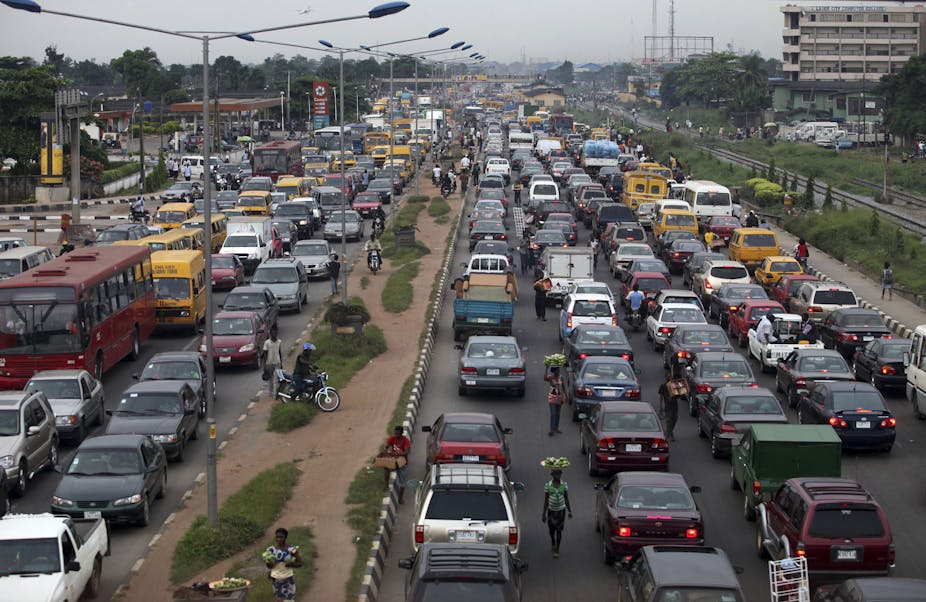Uganda’s economy has been growing steadily over the past decade. Like many other developing countries, its growth has benefited from a confluence of external events, including a sustained increase in commodity prices and partial debt relief.
But since the end of the financial crisis, capital markets have become more risk averse, and with the fall in commodity prices and its corresponding decrease in export revenues, Uganda will have to increase internal savings to finance its investments. This will require structural transformation in its economy, which is still characterised by low productivity and a majority of population being self-employed in agriculture.
As the case of East Asia has shown, urbanisation is a key route to achieving a so-called “productivity miracle”. This entails shifting labour from low productivity jobs in agriculture to high productivity jobs in urban manufacturing. As a result, the countries in that region were able to achieve high growth rates over a sustained period.
While the patterns of structural transformation in Uganda and the rest of sub-Saharan Africa are likely to be different, urbanisation – and creating efficient cities – will still provide the foundation for achieving their own productivity miracle.
For Uganda, urbanisation is the single largest opportunity in the coming decade. By some estimates, Kampala, Uganda’s capital city and largest urban area, already generates about 60% of the country’s gross domestic product. Although there has been little strategic growth over the past decades, there is the real opportunity for Kampala to get it right, as two thirds of the city is yet to be built by 2050.
But to spearhead efforts to support improvements in connectivity, density, and overall urban infrastructure will require new investment and finance. If done well, Kampala could produce much-needed acceleration of productivity and growth by fostering the movement of people towards more productive employment.
Why connectivity matters
Connectivity is necessary for scale and specialisation - the two key ingredients of productivity and growth. But connectivity is a major challenge in Kampala, which is becoming more congested by the day.
According to current estimates, a staggering 24 000 person-hours are lost every day just by people sitting in traffic jams. This is a serious drain on the productive capacity of the city.
The Kampala Capital City Authority has undertaken feasibility studies for a light rail system, cable cars and fly-overs as potential solutions to this challenge. But these are projects for the future.
Kampala is still a low density city and could already greatly benefit from cheaper and more easily implementable projects such as bus lanes and eventually a bus rapid transit system. Overall, a much higher proportion of the city will need to be devoted to road infrastructure. For example, today in Nairobi, only 11% of urban area is roads. But an efficient middle income city requires up to 30% to be taken up by road networks).
As a first step, Kampala can expand on the potential of the Northern Bypass road by increasing the number of access nodes. This will allow for clusters of firms, particularly those in manufacturing, which can benefit from the connectivity.
It is both easier and more cost effective to support connectivity and provide quality services if there is sufficient density within a city. This is partially driven by where people live. Over 60% of Kampala’s population lives in informal settlements, often characterised by single-storey shacks.
This is the primary reason for Kampala’s low density and rapid urban sprawl. To illustrate this, Lagos’ residential density is about 18 000 people per square kilometre, compared to Kampala which only has 9 000 people per square kilometre. To increase residential density, Kampala can learn from Addis Ababa, where the government supported the building of low-cost five-storey housing units.
Five stories is the maximum number of floors that do not require the installation of a lift. But the bottom floor of these developments can be used for commercial purposes.
Money and land rights
A number of investment decisions need to be taken and financing has to be generated. In this area in particular, the government needs to take a lead by investing in anchored public infrastructure as a commitment and a coordination device.
The second major input is a well functioning land market, which Kampala does not have. There are five or six major landholders who are benefiting from loopholes in the laws and administrative shortcomings, and who are thus accruing all the value in the appreciation in land without being taxed.
The issue is far from simple as some of these land rights are legacies of traditional ownership patterns. Still, as a first and urgent step, Kampala needs to both strengthen its urban land registration process, ensuring there is a public record of transactions and land prices, and then impose a tax on the value of land.
Although this may be unpopular with current land owners, it is not only ethical but also necessary to ensure that the city has enough revenue to finance its growth. Aside from taxation, the authority has also just received an internationally recognised credit rating of A in the long term, awarded by the Global Credit Ratings agency. Based on this, it is in the process of developing the first city bond as an alternative financing mechanism for their projects.
Kampala has made great strides in the last five years. It’s put in place a number of initiatives and institutional reforms in order to regain public trust and credibility.
But two thirds of the city of the future remains to be built. The city authority is now faced with the difficult decision on how to balance its efforts: there will be a lot of pressure to retrofit the parts of the city that have already been built.
Although this will be necessary to ensure that Kampala becomes a more productive city, it is still the opportune moment to put in place policies that will drive the development of the remaining parts of the city as well.

